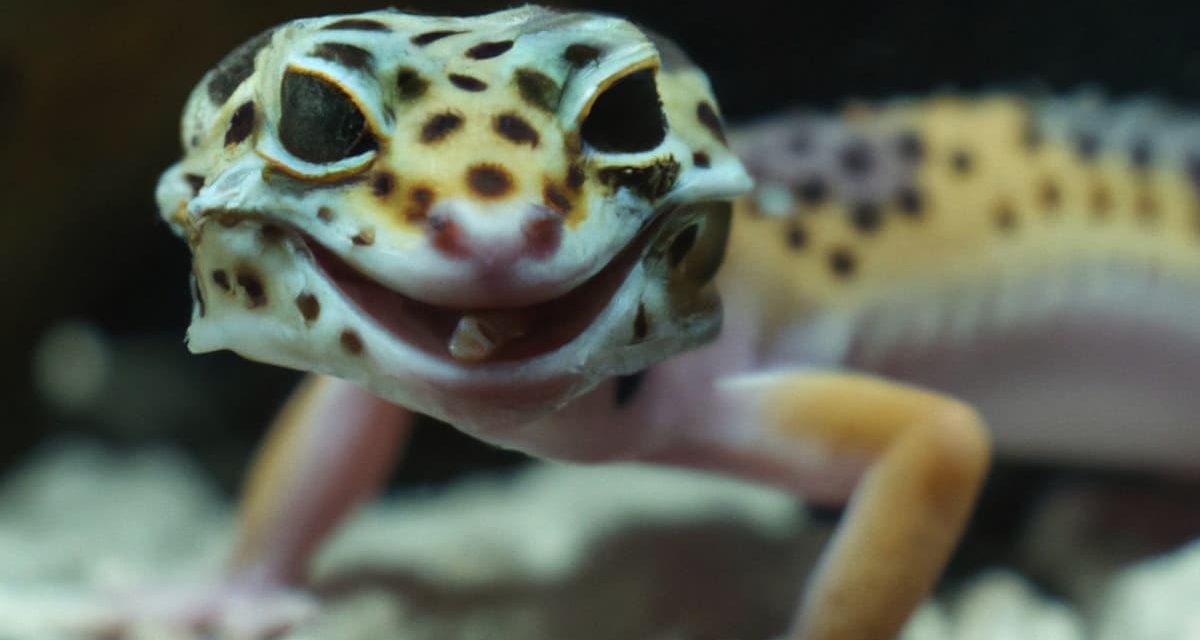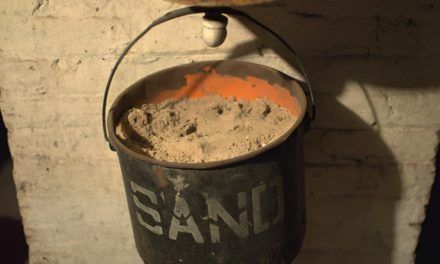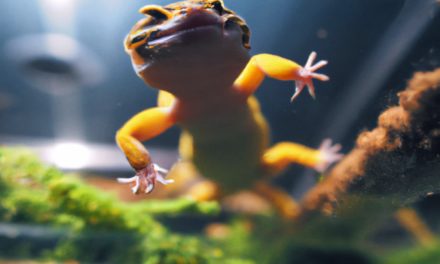
Are you a proud or prospective owner of a leopard gecko? If so, you’re in the right place! But one of the most important things you need to sort out early on is the getting the right sized tank for your gecko.
Understanding Your Leopard Gecko’s Space Needs
It’s important to understand that leopard geckos are unique creatures with specific needs. They hail from the rocky, desert areas of southwestern Asia, and they love to explore their surroundings. So you can’t keep them in a tiny little goldfish bowl – they need some space. You can of course also let them out to roam around your room (be careful they can’t get anywhere you can’t get them out of!) but they will still spend most of their time in their enclosure.
So, when setting up your leopard geckos tank, as well as making it as much as possible like their natural environment, we also need to give them enough space.
Size Matters: Choosing the Right Tank Size
When it comes to leopard gecko tanks, size really does matter. But how big should the tank be? Let’s break it down.
Tank Size for Baby Geckos
A baby gecko, also known as a hatchling, is tiny and doesn’t require a lot of space. A 10-gallon tank, which typically measures 20″ L x 10″ W x 12″ H, is sufficient for these little ones. This provides enough room for them to explore without feeling overwhelmed.
Tank Size for Juvenile Geckos
As your gecko grows, so should their tank. Juvenile geckos, those aged 2 to 10 months, will need a bit more space. A minimum of a 15-gallon tank, measuring around 24″ L x 12″ W x 12″ H, should do the trick. This allows them more room to roam and explore, which is essential for their development.
Tank Size for Adult Geckos
Once your gecko reaches adulthood (10 months and older), they’ll need even more space. An adult gecko will need at least a 20-gallon tank, which typically measures 30″ L x 12″ W x 12″ H. But hey, bigger is always better! Some gecko gurus even recommend a 40-gallon tank for adult geckos, measuring around 36″ L x 18″ W x 18″ H. Just remember, the tank should be wide and not too tall as leopard geckos are ground dwellers – which means they spend most of their time on the ground not up in trees!
Start Small Or Just Go Big?
My advice is to buy a bigger tank to start with – 20 gallon minimum. Unless you’re keeping lots of geckos or breeding them there’s no point buying small tanks because you’ll only have to buy a bigger one really soon. It’s a waste of money. So just go big with your first tank.
Read our guide to the best tanks for a leopard gecko.
Tank Size for Multiple Geckos
Planning to house more than one gecko in a tank? You’ll need to increase the tank size accordingly. For two geckos, a 30-gallon tank is a good start. If you’re considering three geckos, aim for at least a 40-gallon tank. However, always monitor your geckos for any signs of stress or aggression, as not all geckos enjoy company.
Note: do NOT keep more than one male gecko in the same tank, they will not like it and will fight! And obviously if you’re going to mix male and female be prepared for them breeding. (Here’s how to find out the gender of a leopard gecko if you’re not sure)
Transitioning to a New Tank
As your gecko grows, or if you decide to upgrade your tank, you’ll need to transition your gecko to their new home. This can be a bit stressful for your gecko, but don’t worry, we’ve got some tips to make the move smoother.
First, set up the new tank completely before introducing your gecko to it. Make sure the temperature and humidity are just right (see temperature and humidity for your leopard gecko terrarium). Then, move your gecko’s hides and other familiar items to the new tank. This will help them feel more at home. When you’re ready, gently move your gecko to the new tank. It’s normal for them to be a bit nervous at first, but they should settle in within a few days.
Monitoring Your Gecko
Keep a close eye on your gecko during the transition. Watch for any signs of stress, like changes in eating or sleeping habits. If your gecko seems overly stressed, it might be worth consulting with a vet or a reptile expert.
Additional Considerations for Choosing the Right Tank
While size is a crucial factor in selecting a tank for your leopard gecko, there are other elements you shouldn’t overlook.
Heat Gradients
A larger tank might pose challenges in maintaining a proper heat gradient. Make sure you have the right heating elements in place to ensure your gecko can thermoregulate effectively.
Substrate and Humidity
The type of substrate you use can significantly impact the humidity levels inside the tank. Be cautious when selecting substrates, especially for larger tanks, to maintain the right moisture levels.
Ethical Choices
When purchasing a tank, consider buying directly from companies that are known for ethical practices. This not only ensures you get a quality product but also supports businesses that treat animals responsibly.
Summing Up
Creating the perfect habitat for your leopard gecko is a big responsibility, but it’s also a lot of fun! Remember, the key is to mimic their natural environment as closely as possible, and that starts with choosing the right tank size (also consider your tank substrate options). So whether you’re a new gecko parent or an experienced owner looking to upgrade, we hope this guide has been helpful.
Happy gecko-keeping!
FAQs
What size tank does a baby leopard gecko need?
A baby leopard gecko needs a 10-gallon tank, which typically measures 20″ L x 10″ W x 12″ H.
What size tank does an adult leopard gecko need?
An adult leopard gecko needs at least a 20-gallon tank, which typically measures 30″ L x 12″ W x 12″ H. However, a 40-gallon tank is often recommended for adult geckos.
What size tank do I need for multiple leopard geckos?
For two geckos, a 30-gallon tank is a good start. If you’re considering three geckos, aim for a 40-gallon tank.
How do I transition my leopard gecko to a new tank?
Set up the new tank completely before introducing your gecko to it. Move your gecko’s hides and other familiar items to the new tank. Then, gently move your gecko to the new tank. Monitor your gecko closely for signs of stress.















